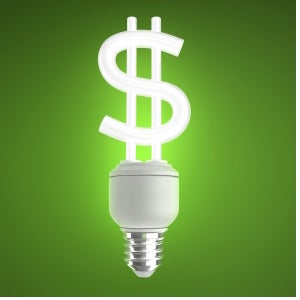$200 Million in Private Capital Financing Signals Investors’ Support for Clean Energy

While 2014 is only just getting underway, it is already shaping up to be a banner year for clean energy finance. Capital investments are being made, funds developed, and securitization tools crafted — all with remarkable speed. And private capital markets are aggressively rallying around these efforts, which will only increase the momentum of our collective efforts to drive investments into essential energy efficiency and renewable energy projects.
Funding for homeowner energy efficiency loans could lead to securitization
Early this year, clean energy consumer finance company, Kilowatt Financial, closed a $100 million deal with Citi to finance 10-12 year unsecured loans of up to $30,000 for homeowners making energy efficiency improvements to their HVAC (heating, ventilation, and air conditioning) systems, water heaters, windows, roofing, insulation, lighting, and appliances.
The transaction is designed to facilitate a securitization of loans (which promotes liquidity in the marketplace), help establish a secondary market, and spur energy efficiency investments. Kilowatt and Citi expect to create term asset-backed securities from the loans that will provide a sustainable source of capital for homeowners looking to make home energy upgrades.
Marshal Salant, managing director and global head at Citi Alternative Energy Finance, stated that “Citi is committed to financing clean energy and energy efficiency improvement projects like Kilowatt’s loan program, which will have an immediate impact on the homeowners and communities that we both serve. This transaction will allow Kilowatt to launch a much-anticipated market for the securitization of consumer energy efficiency loans in the U.S. asset-backed security market.”
In addition to this new, unsecured energy efficiency product, Kilowatt currently offers solar financing in the form of leases and power purchase agreements (PPAs) in Arizona, California, Colorado, Connecticut, Hawaii, Maryland, Massachusetts, New Jersey and New York. Direct loans are also available as retail installment contracts or direct loans for solar in over more than 40 states, including the states listed above.
Aggregation and monetization make for investor-ready energy efficiency projects
Following on the heels of Kilowatt’s announcement, Joule Assets announced that the Joule Energy Reduction Assets (ERA) Fund is seeking to deploy at least $100 million globally over the next three years to help finance the installation of clean technology that generates energy savings, such as building controls, LED lighting, efficient HVAC systems, and programmable thermostats.
The Joule ERA Fund will aggregate small- and medium-sized projects ($50,000 – $500,000) that generate revenues from these types of efficiency upgrades. In addition to traditional financing revenue streams, Joule Assets will profit from energy savings in commercial buildings through renewable energy certificates, white certificates (documents certifying that a certain reduction of energy consumption has been attained), or reductions in electricity bills.
By aggregating these clean energy projects, the Fund hopes to make them attractive to private investors and institutions that would otherwise not be willing to shoulder the costs of underwriting individual transactions of this scale. The Fund will lend money to other parties of the transaction who sell the technologies directly to businesses. The loans made by the Fund will be backed-up by an allowance for bad loans (a loan-loss reserve) worth about one-tenth of the loan.
Joule expects the ERA Fund to “open up the energy efficiency markets,” drawing parallels to the recent SolarCity bond issuance that was backed by cash flows generated from rooftop solar installations.
Loan securitization remains critical for broad-scale deployment of clean energy
The size of these two efforts – $100 million each – is no accident. Markets broadly consider that number to be the smallest at which securitization is a viable option.
Asset-backed securitization and secondary market creation will be critical for broad-scale, private capital engagement. Securitization has the potential to exponentially expand clean energy investments to institutional investors such as mutual funds and pension funds, as well as large financial institutions looking for pooled assets. In effect, the private capital spigots will be opened with investments flowing into critical renewable energy and energy efficiency projects.
Each of these solutions represents portfolio-based approaches to achieve scale and reduce transaction costs to investors. EDF believes that both of these efforts signal an important step forward. However, there are other key barriers and transaction costs that are impeding demand and causing uncertainty for a range of investors. One such risk is the complexity of evaluating performance risk, particularly on energy efficiency transactions that can be extremely complex and unique. EDF is working to address this issue through our Investor Confidence Project efforts, which are designed to standardize projects into recognizable assets and aid in pooling of projects with manageable outcomes.
Asset-backed securitization will give both the renewable energy and energy efficiency industries broader access to more potential investors. It will also serve to lower the cost of capital, level energy costs, and enhance market liquidity. Citi’s investment and the efforts of Kilowatt Financial and Joule Assets, coupled with tools such as EDF’s Investor Confidence Project, can make it easier for clean energy investments to break into the secondary market.












